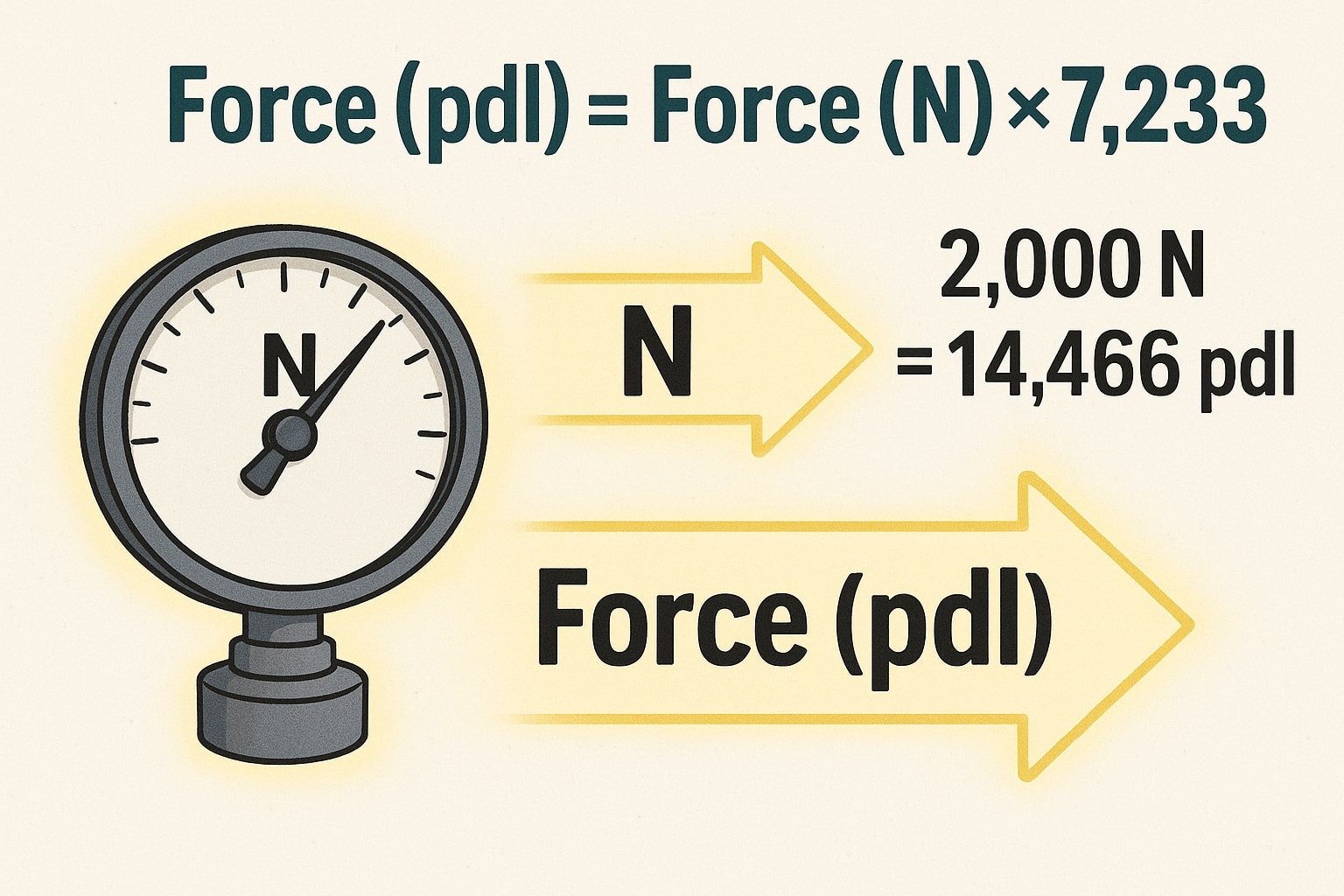newton to poundal – How to convert N to pdl
The conversion from newton to poundal may not appear often in casual contexts, but in engineering and historical aerospace work, it’s a practical necessity. This guide explains both units, shows you the formula, and explores a real example from the early days of rocket research where the N ↔ pdl shift was critical.

What is a newton (N)?
The newton is the SI unit of force, defined as the force required to accelerate a 1-kilogram mass by 1 meter per second squared.
1 N = 1 kg·m/s²
It’s used globally in physics and engineering, from designing machines to measuring forces in scientific experiments. Large projects, like spacecraft launches, often specify thrust and load ratings in newtons for international consistency.
What is a poundal (pdl)?
The poundal is a unit of force in the FPS (foot–pound–second) system, defined as the force required to accelerate a 1-pound mass by 1 foot per second squared.
1 pdl = 1 lb·ft/s²
Poundals are smaller than newtons. In fact, 1 N ≈ 7.233 pdl. This unit was widely used in U.S. engineering and ballistics before the metric system became the global standard in aerospace and science.
Formula for converting N to pdl
The conversion factor is straightforward:
Force (pdl) = Force (N) × 7.233
Example:
If you have 50 N:
50 × 7.233 = 361.65 pdl
If you want the reverse, divide by 7.233 instead. For instant, accurate results, the Force Converter on Jetcalculator will handle N ↔ pdl and many other unit changes. You can also explore related tools like How to convert meter to centimeter in the Conversion Tools section.
Do you know?
-
Newton: The downward force on a 1 kg mass under Earth’s gravity is roughly 9.81 N — a common reference in engineering calculations.
Poundal: In early U.S. artillery manuals, recoil forces were listed in poundals to match the FPS system used in military engineering. -
Newton: A Formula 1 car braking from top speed can generate over 10,000 N of force on the tires.
-
Poundal: A baseball struck at high speed can experience a force of several hundred poundals during the bat-ball collision.
From poundals to newtons at Langley
In the 1950s, before NASA was officially formed, the Langley Aeronautical Laboratory (part of NACA) was conducting rocket thrust tests for high-altitude research vehicles. At the time, American engineers worked in the FPS system, expressing small test forces in poundals.
As the U.S. began collaborating with international scientists — many using the SI metric system — a conversion was needed. Rocket engine data in poundals had to be translated into newtons for design reviews, simulation models, and technical reports shared with European aerospace agencies.
In one early test, engineers recorded a thrust reading of about 14,466 pdl. Converting to newtons made it easier for international teams to interpret:
14,466 ÷ 7.233 ≈ 2000 N
This wasn’t just about unit preference — precise conversions reduced the risk of misunderstandings in joint projects, where a wrong factor could lead to flawed structural designs or fuel calculations. Over time, NASA fully adopted the SI system, but the legacy of pdl-based measurements still lives on in historical test records.

Bridging old and new
The equation 1 N ≈ 7.233 pdl might look simple, but it links two engineering worlds: the historic FPS system and the modern SI system. Newtons remain the global standard, yet poundals appear in older data, military archives, and certain physics textbooks.
Whether you’re reviewing vintage aerospace data, converting ballistic test results, or translating an old engineering report, this unit shift keeps the numbers accurate and the meaning clear.
Jetcalculator makes it easy to switch between N to pdl and back, so you can focus on interpreting results — not double-checking arithmetic. In engineering, clarity is as valuable as precision, and sometimes, both begin with the right conversion.

